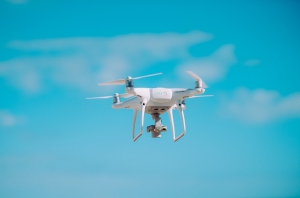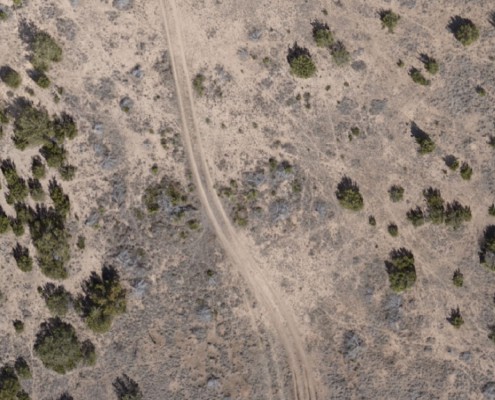
For an aerial land survey, photogrammetry – the gathering of visual data via multiple overlaid high-resolution photographs – provides an affordable, fast, and easy method of acquiring large-scale survey data. Photogrammetric data can be acquired in multiple ways; the three most common platforms are planes, helicopters, and drones. Here’s how you can determine the best of the three for your project.
Plane Photogrammetry Mapping
Planes cover large areas of land quickly from a high
elevation. They are uniquely well-suited to aerial photogrammetry, as aerial
photogrammetry is best for larger surveys that don’t need the sub-inch
precision of LiDAR scanning. Planes typically aren’t going to be able to take
very detailed surveying data, because they can’t safely fly close enough to the
ground, nor can they hover in place.
However, planes travel high enough that they can take very
large pictures for the purposes of imaging. Planes are also able to fly in
weather conditions that drones and helicopters struggle to safely or
effectively operate in. Planes are the best solution for those who want to take
a large land survey, but there are some downsides: Planes take a long time to
deploy, and can be particularly expensive.
Helicopter Photogrammetry Mapping
Helicopters can fly lower to the ground than planes, but not
as close as drones – not safely, anyway. Helicopters can stabilize themselves,
which means they can hover and collect higher resolution information over a
smaller area. They deploy faster and more cheaply than airplanes do, but not as
quickly or cheaply as a drone. It does take some time to deploy a helicopter
because a manned crew has to prepare and the process can sometimes involve
obtaining permits.
For aerial photogrammetry, helicopter mapping provides a
compromise between drone mapping technology and plane technology. Helicopters
cannot safely fly into areas where drones can easily operate, so a helicopter
may not be able to get as complete a scan as a drone can, but a helicopter also
doesn’t have the battery life limitations a drone would. It can also be more
difficult – or at least more confusing – to permit a drone than a helicopter in
some locations, due to changing regulations.
Drone Photogrammetry Mapping
Unmanned Aerial Vehicles (UAVs), commonly known as drones, are versatile tools that can be used for high resolution, low-to-the-ground scanning. Drones are often used for LiDAR scanning, as LiDAR scanning is more accurate and detailed than photogrammetry is, and it can take advantage of drones’ ability to safely fly close to the ground. However, drones can also be used for photogrammetric scanning or even combined LiDAR and photogrammetric imaging.
A UAV has the advantage of being the cheapest option, while
also not requiring a manned crew: Manned crews are expensive, and can also be
injured in the event of an accident or mistake. However, UAVs cannot be effectively
used during storms and high winds, and they also have battery power and
significant range limitations compared to planes or helicopters. When there
aren’t any environmental issues, a UAV is often the most convenient
choice.
LiDAR vs. Photogrammetry
While LiDAR is able to capture higher-resolution images than photogrammetry, and is therefore more accurate, photogrammetry has some advantages. It’s faster, cheaper, and able to derive the proper textures and colors of terrain during scanning. Photogrammetric scans are often be more friendly to the human eye: An individual can recognize information in photogrammetric scans almost immediately, whereas a colorless 3D model generated via a LiDAR scan may be less intuitively parsed.
LiDAR scans may take some additional work. Unfortunately, photogrammetric scans can’t get the detailed data that LiDAR scans can, so photogrammetry is usually better for larger surveys that don’t need as highly detailed data. However, this isn’t always a binary choice: LiDAR and photogrammetry can be paired for detailed scans that have natural texture and color. For survey scans that need to be both accurate and human-readable, a combined option is often best.
Ultimately, aerial photogrammetry can be used with positive results with planes, helicopters, or drones: It all depends on whether you’re more interested in speed, accuracy, or budget. You can work with Landpoint to find out more about whether aerial photogrammetry is right for you or whether you might want LiDAR aerial land survey technology instead. If you’re interested in having an aerial survey done for your next project, contact Landpoint today.






